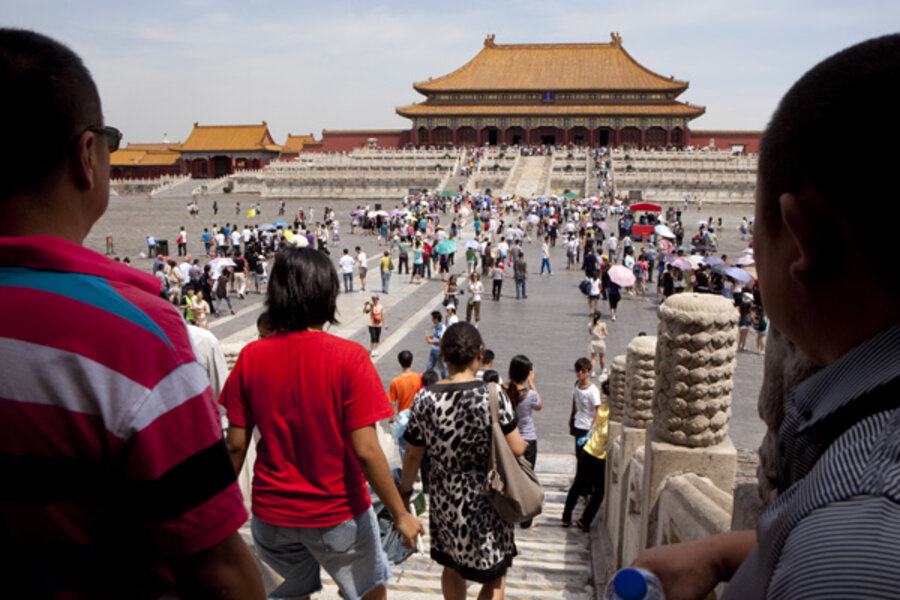China's future has arrived
Loading...
| Beijing
The most striking thing about Beijing is how much it looks like America.
Despite all I’d read and heard about China’s economic miracle and social transformation, it was still a shock to see rows of Hummers for sale, traffic jams instead of bicycles, and huge glass-and-marble shopping malls.
It’s puzzling how all this can exist in a centralized communist state. Apparently, the freedom to make money puts a damper on dissent.
A huge middle class has emerged, and the pampered children of China’s one-child policy are the center of attention for parents and grandparents. Affluent neighborhoods cater to foreigners, but also to more and more superwealthy Chinese.
Designer stores – Prada, Emporio Armani, Chanel – dot the malls alongside Starbucks cafes. New-model cars, foreign and domestic, crowd wide streets and highways.
Beijing’s old neighborhoods, or hutongs, are disappearing fast. Life in those that remain is often uncomfortable (an entire street might share bathroom facilities), but walking the tree-lined streets of one-story homes and courtyards filled with chatty neighbors and clucking chickens is much more pleasant than traversing the more-prevalent eight-lane-wide boulevards lined with massive high-rises.
Sadly, all this progress seems to have a price: smog so thick that you cannot see the sky. But a better life isn’t just coming – it’s here.





